Recent Articles
Popular Makes
Body Types
2016 Honda HR-V Road Test and Review
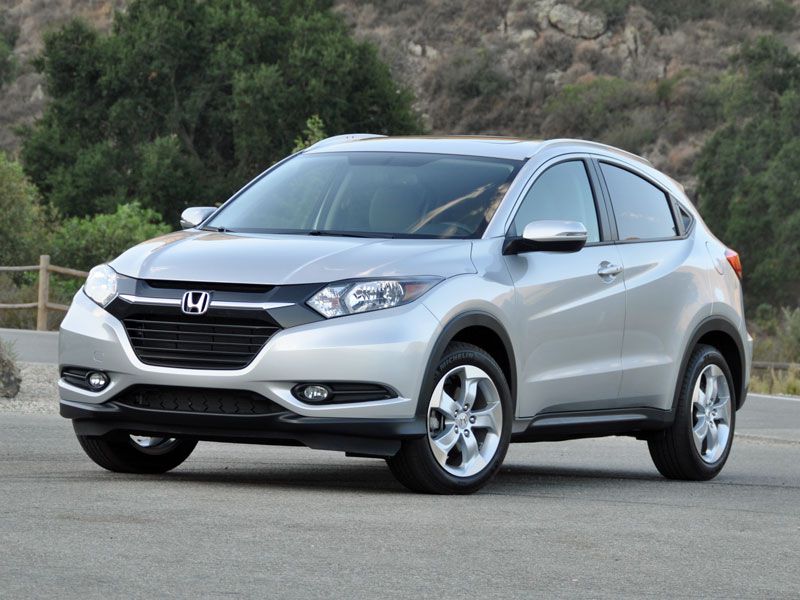
2016 Honda HR-V EX-L Alabaster Silver Front Quarter Left ・ Photo by Christian Wardlaw
Affordable, practical, and relatively fuel efficient, small crossover SUVs supply extra space for people, pets, and cargo, as well as available all-wheel drive for blizzard-battling duty. Increasingly, Americans are swapping out of cars and into crossovers, making them the most popular type of vehicle in the U.S.
Honda is no stranger to the segment. The original CR-V was one of the first crossovers to arrive in the States back in 1997, right after Subaru launched the Outback and Toyota added the RAV4 to its lineup. Today, almost 20 years later, the CR-V is Honda’s most popular vehicle.
Naturally, as the CR-V grew in size and price, the automaker sought a new model to slot beneath it, a smaller and more affordable crossover. For 2016, the new Honda HR-V arrives to fill that role, based on the Honda Fit platform and offering much of that car’s practicality in a larger, stronger, SUV-ish design.
Does it make sense to get a 2016 Honda HR-V? As is true of any vehicle purchase, the answer depends on what you value. Having spent a week driving one, I can tell you that the HR-V suffers a few flaws that could have you shopping for an alternative.
HR-V Trim Levels and Differences
Honda sells the new HR-V in three different levels of trim, each equipped with spiffy 17-inch aluminum wheels. Choose the HR-V LX, and this compact crossover includes air conditioning, power windows, power door locks, power side mirrors, a multi-angle reversing camera, cruise control, and a tilt/telescopic steering wheel. Bluetooth hands-free calling and music streaming is also standard, along with a 5-inch display screen and a USB port.
In all HR-V models, the driver’s seat includes a height adjuster, and the rear seat features a 60/40-split folding design and has a cushion that flips up to carry tall items on the HR-V’s floor. The front seat also folds flat, allowing Honda’s little SUV to carry long items with the rear liftgate closed.
Upgrade to the HR-V EX for automatic-on headlights, fog lights, heated side mirrors with integrated turn signal indicators, heated front seats, dynamic guidelines for the reversing camera, and dark tinted rear privacy glass. The EX model is also equipped with keyless entry with push-button engine starting, a power sunroof, variable intermittent wipers, and illuminated vanity mirrors.
EX models have a touch-panel automatic climate control system and a touchscreen infotainment system. The infotainment system includes HondaLink subscription services, text-messaging support, an extra USB port, upgraded stereo speakers, and access to Internet radio. The screen serves as the display for Honda’s LaneWatch driver assistance technology, which is standard for the HR-V EX.
Select the HR-V EX-L to get leather seats, a leather-wrapped steering wheel, an auto-dimming rearview mirror, satellite radio, HD Radio, and a navigation system. My test vehicle had EX-L trim, Alabaster Silver paint, and front-wheel drive. The sticker price came to $25,590, including the $900 destination charge.
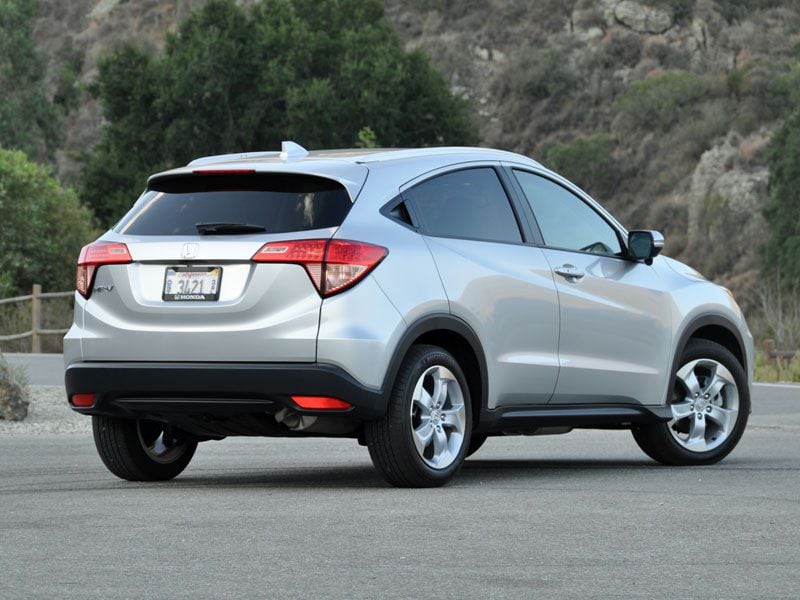
Photo by Christian Wardlaw
HR-V Styling and Design
Chubby-cheeked and expressive, the Honda HR-V is the very definition of a cute-ute. There is nothing rugged about this design, and Honda wisely installs attractive 17-inch aluminum wheels for all versions of the HR-V.
Inside, the purposeful HR-V’s cabin emphasizes typical Honda simplicity, quality, and refinement. Gray interiors have an appealing 2-tone appearance, and Honda’s use of simulated stitching, piano-black and chrome accents, and unique design details like the row of air vents in front of the front passenger and the sloping center console give the HR-V a more upscale look and feel.
Instrumentation is a model of clarity, and with the 7-inch infotainment system display looks and works like smartphone or tablet computer, right down to its crisp, high-resolution graphics, I’d still prefer it if it came with knobs for power/volume and tuning, as well as a row of radio station pre-set buttons.
Standard for the EX and EX-L models, the HR-V’s touch-sensing climate control system is a bad idea. Set it and forget it, and you’ll be OK. But if you like to make temperature or fan speed adjustments, or you need to use the defogger and defroster, it becomes a distraction as the driver tries to touch the panel in exactly the right place. Busy suspension tuning and a choppy ride make accuracy a hit-and-miss exercise unless the HR-V is stopped.

Photo by Christian Wardlaw
HR-V Engine and Fuel Economy
Though it is based on the same platform as the Honda Fit, the heavier Honda HR-V gets a more powerful engine. Still, this is not a powerful vehicle, its 141-horsepower, 1.8-liter 4-cylinder engine generating just enough motivation to accelerate the HR-V in a respectable manner.
A 6-speed manual gearbox is standard, but my test vehicle had the continuously variable transmission that is standard for the EX-L and an option in other models. Both transmissions power the HR-V’s front wheels, and an all-wheel-drive system is optional.
Fuel economy is impressive, especially considering how much interior space the HR-V supplies. On my standard testing loop, the HR-V got 31.4 mpg, slightly better than the EPA’s 31-mpg rating in combined driving. I did not use the Econ driving mode, or pay much attention to the Eco Coach. Who needs to, when gas is two bucks per gallon?
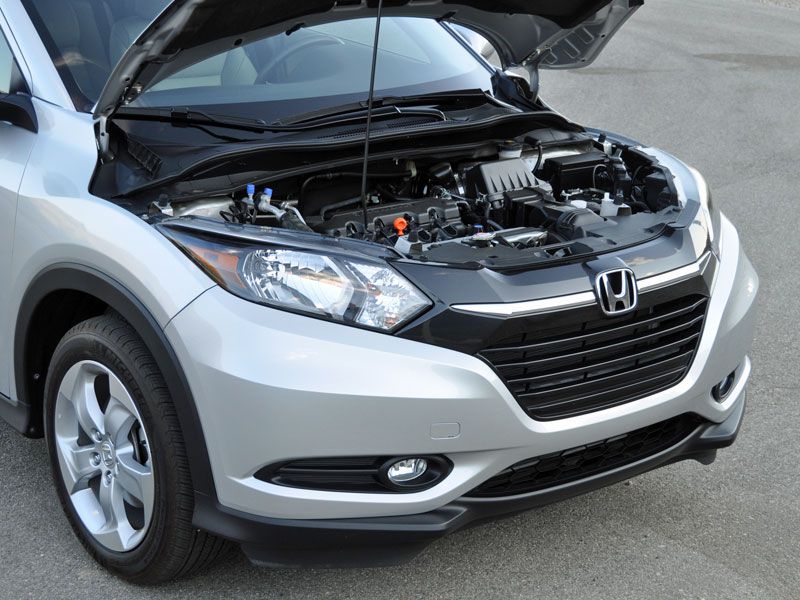
Photo by Christian Wardlaw
HR-V Driving Dynamics
Adequate best describes the HR-V’s acceleration, and while the CVT supplies a Sport setting as well as paddle shifters, these features do little to resolve the power deficit. The best the transmission can do is to keep the engine revved at steady rpm when the driver desires maximum response, the powertrain droning and sounding like it is straining to make the HR-V go. What this Honda desperately needs is a turbocharger.
As is typical of Honda products, the brakes, steering, and handling are well sorted. Light and accurate, the steering is a pleasure to use, and the brake pedal is perfectly calibrated. Even when heated up while driving down a mountain road, they delivered impressive response for a panic-braking situation.
Tossable and nimble, the 17-inch wheels and tires supplying impressive levels of grip, the HR-V elicited a chuckle or two as I chucked it along the highways draped atop the Santa Monica Mountains near Malibu. Of course, the smile graced my face only when going downhill, but still.
Unfortunately, in the cities and suburbs where the HR-V will spend much of its time, the HR-V’s suspension tuning waffles between woozy and stiff, communicating sharper bumps and jolts but then attempting without success to attenuate dips and rises. The result is a jittery, bouncy ride quality that is rather unpleasant.
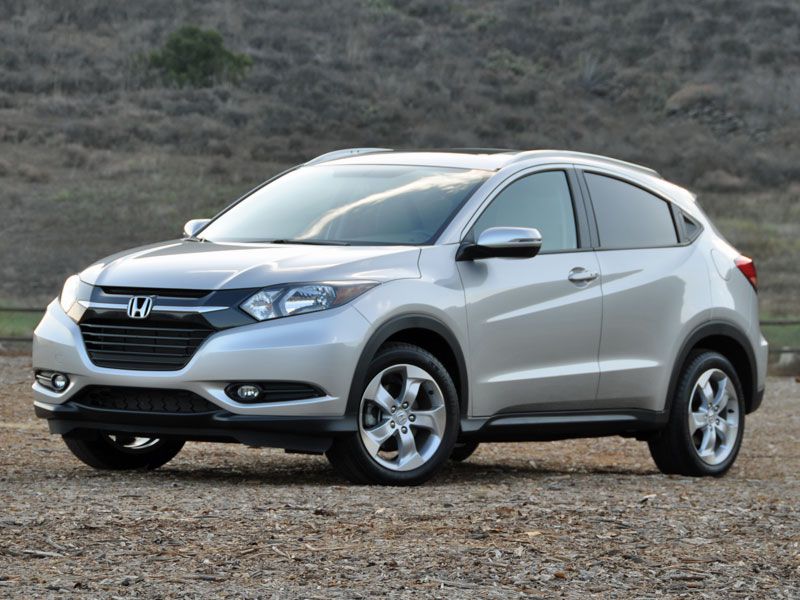
Photo by Christian Wardlaw
HR-V Comfort and Utility
Taller people will wish for greater front seat track travel, especially on the driver’s side. Additionally, the driver’s seat did not provide enough thigh support while simultaneously delivering too much lumbar support. As a result, I found the HR-V mighty uncomfortable.
Outstanding for any vehicle, let alone one this small, the HR-V’s rear seat is my preference. It’s got a ton of room, making this Honda legitimately sizable enough for a family of four. Plus, thanks to Honda’s Magic Seat design, the bottom cushions flip up to carry tall items. Or, you can fold one side of the seat down and flip the cushion on the other side of the seat up to handle something long and something tall at the same time.
Utility certainly is a key HR-V characteristic. If you’re filling the SUV with people, it will carry 24.3 cu.-ft. of cargo* behind the rear seat, in a space wide enough to handle a compact folding stroller across the width of the vehicle. Fold the rear seats and the HR-V holds 58.8 cu.-ft. of cargo*.
*Measurements are slightly reduced for HR-Vs equipped with all-wheel drive.
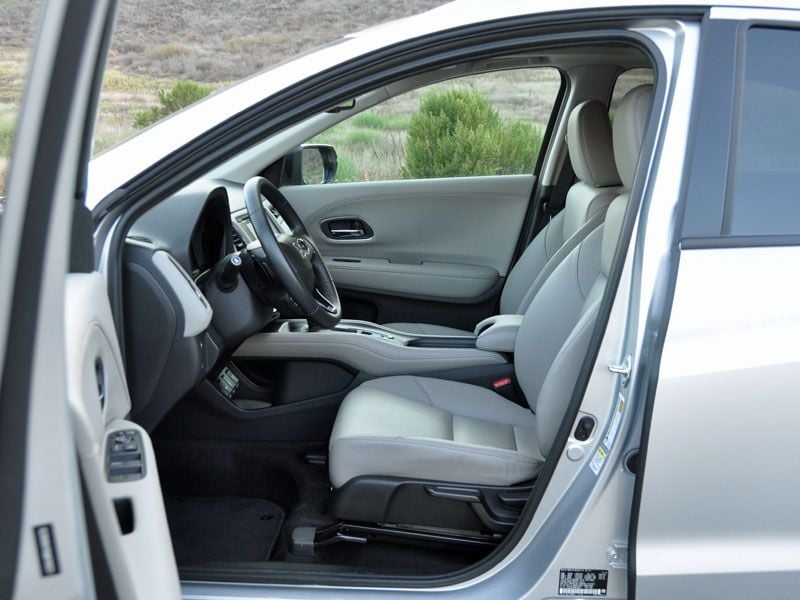
Photo by Christian Wardlaw
HR-V Safety Ratings
Built using Honda’s Advanced Compatibility Engineering (ACE) vehicle architecture, which is designed to make the company’s products safer against a variety of both lighter and heavier vehicles, the HR-V should be among the safest vehicles in its class.
Uncharacteristically, the HR-V earns “Acceptable” rather than “Good” ratings from the Insurance Institute for Highway Safety in both the small offset frontal impact test and in the side impact test. In federal government testing, the HR-V receives a 5-star overall rating, but earns 4-star ratings for the driver and front passenger in a frontal impact collision.
Fortunately, when you buy the EX or the EX-L model, HondaLink subscription services provides an automatic collision notification system, which can help speed rescuers to the scene of the accident following an airbag deployment, even if the HR-V’s occupants are unable to initiate the call themselves.
LaneWatch is also standard for the HR-V EX and EX-L. A poor substitution for a proper blind spot warning system that works for both sides of the vehicle, LaneWatch uses a camera to show the driver what is on the right side of the HR-V. The camera’s image is displayed on the infotainment system’s screen. If you want to see what’s on the left side of the HR-V, use the side mirror.
No matter how much money you want to spend, you cannot get a forward collision warning system with automatic emergency braking. What does come standard is a multi-angle reversing camera with an impressive level or resolution. It does not, however, include a rear cross-traffic alert system.
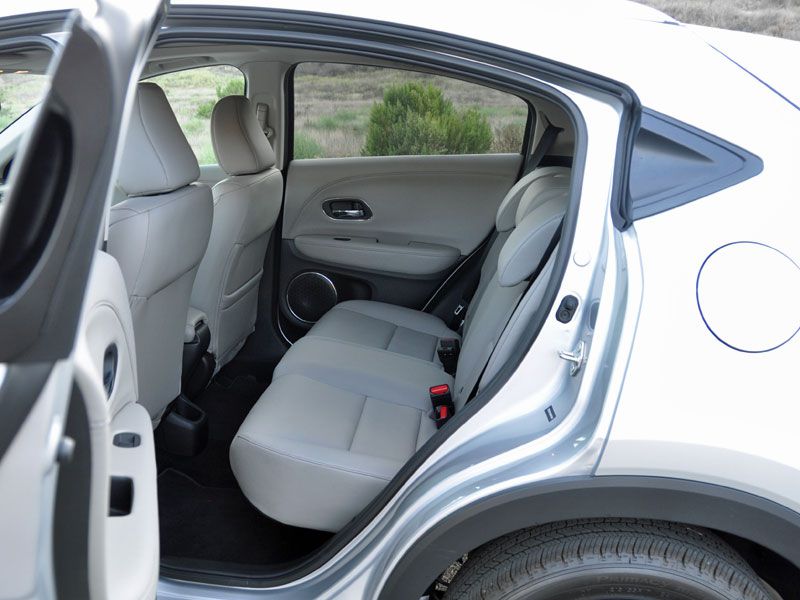
Photo by Honda
HR-V Technology Features
Standard for the Honda HR-V EX and EX-L, a touchscreen infotainment system resembles a tablet computer. It does not have any knobs or buttons. Everything is adjusted through the screen or using the controls on the steering wheel. Some people will like this. I’m not one of them. The HR-V’s jouncy suspension makes matters worse, challenging accuracy when stabbing at the screen with a fingertip.
Next-generation HondaLink service is an improvement over the company’s first try, but it still requires a subscription. Ford and Kia do not require owners to pay extra for similar services, which work instead through the data plan of a connected smartphone. The touchscreen infotainment system also includes text-messaging support and provides access to Pandora Internet radio.
Choose the EX or EX-L model, and the HR-V gets a touch-sensing climate control system. Yuck. Mounted lower on the dashboard, it is impossible to use without looking down and away from the road. Once upon a time, Honda was a master at delivering simple, intuitive, ergonomically superior control layouts. The HR-V proves that those days are over.
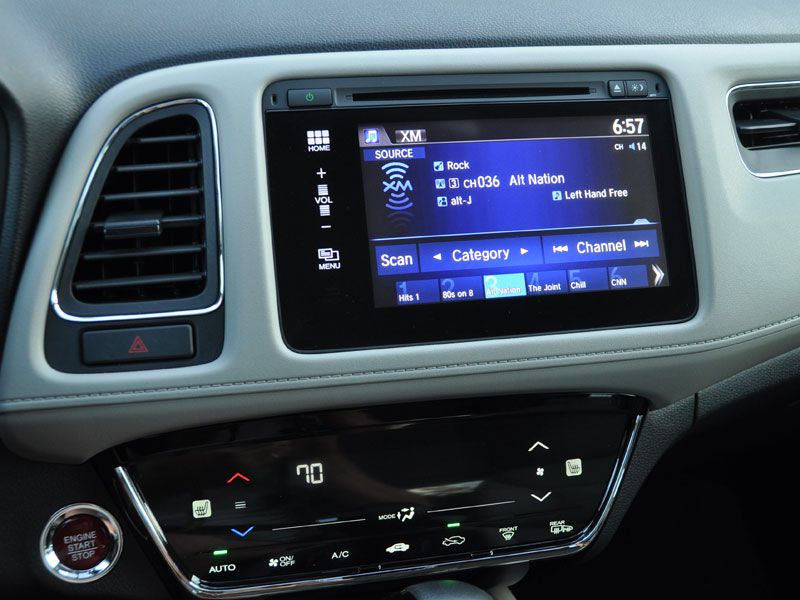
Photo by Christian Wardlaw
Expert Opinion of the 2016 Honda HR-V
Normally, Hondas excel at their given missions. When it comes to the HR-V, the automaker gets the packaging right, but many of the details are wrong. From the fairly weak engine and aggravating touch-sensitive controls to the funky ride quality, irritatingly inferior LaneWatch technology, and imperfect crash-test ratings, the HR-V comes across as half-baked.
Fortunately for Honda, the HR-V can be fixed. What serves as this vehicle’s foundation is genuinely impressive. More power, conventional knobs and buttons, a re-tuned suspension, and a “Top Safety Pick” rating would go a long way toward making the HR-V easy to recommend.
Until then, I’d suggest serious consideration of the competition in addition to this Honda.
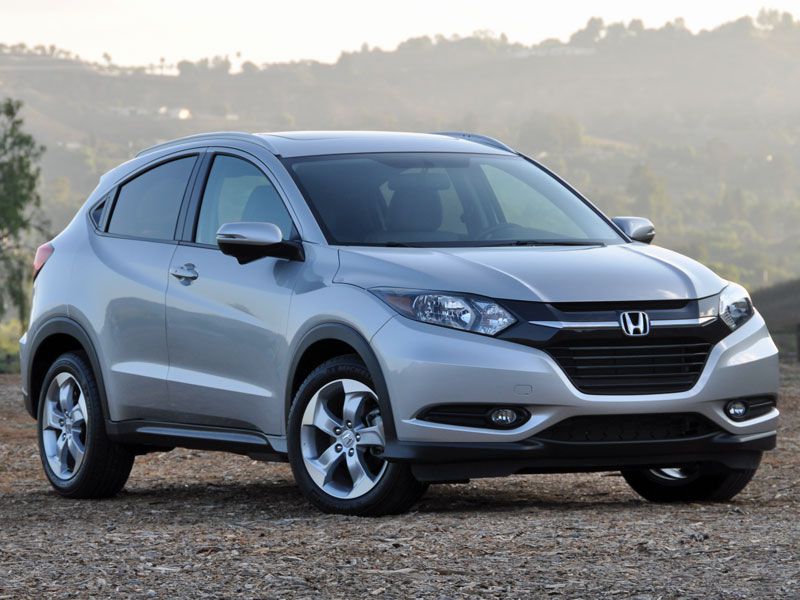
Photo by Christian Wardlaw
HR-V Pros and Cons
- Affordable price
- Terrific fuel economy
- Impressively detailed design
- Roomy interior with Magic Seat functionality
- Entertaining handling on twisty roads, when going downhill
- Underpowered engine
- Jittery, bouncy ride quality
- Uncomfortable driver’s seat
- Flawed ergonomics (EX and EX-L)
- Misses the mark on safety ratings
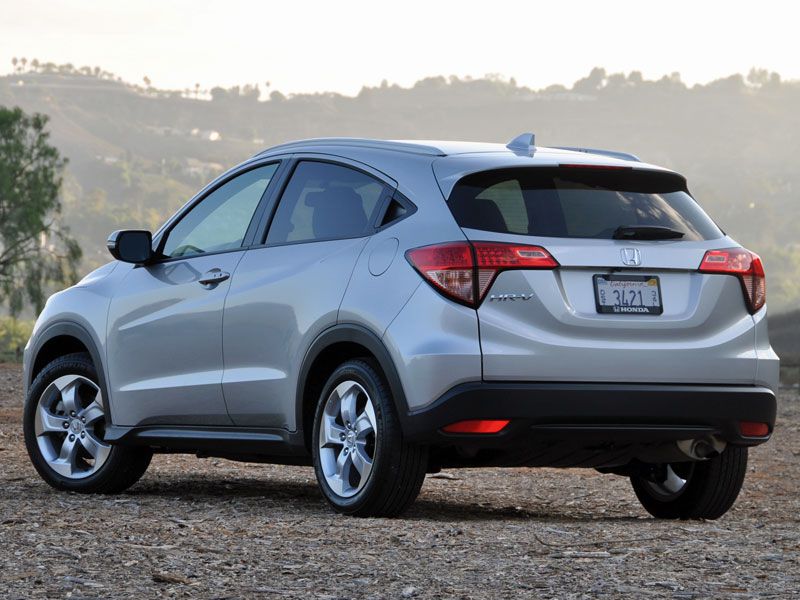
Photo by Christian Wardlaw